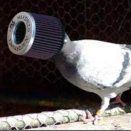Faking signals to ECU pins to fix check engine light
Announcements
-
Similar Content
-
Latest Posts
-
By Murray_Calavera · Posted
Strange your posting about this being an issue. Move the harness or change your wheels or run more camber etc. Have the thing not touch the thing so it doesn't destroy the thing. Short answer, no. Slightly longer answer, the factory fuel gauge is measuring resistance. You need to wire in the FPG fuel level sender into the original factory fuel level sender wiring. I drew you a picture to explain this one The factory strainer is quite long, reaching down into the bottom of the tank. Safe bet your aftermarket fuel pump has a little baby sized strainer that probably doesn't even point down towards the bottom of the thank. Solution, move the pump lower down in the tank, or fit a longer strainer, or do both. I did both, I've run my tank down to 5L remaining and the car still drove fine. -
By Dose Pipe Sutututu · Posted
S2/3 GT-R is the same as S2 GTS-t The SRS airbags module in under the centre console. The S1/S1.5 GTS-t and S1 GT-R had the module built into the steering wheel. FWIW, I have a S3 GT-R wheel in my S2 GTS-t shit box. Same airbag plug, airbag light goes on then off, meaning all systems are go. S3 GT-R has red stitching, that's about it. -
By PotatoCake · Posted
Dumb question, but why would it matter if the wheel came off a car with hicas or not? -
Hey to anyone that reads this, long time lurker first time posting, sorry if it’s been answered before but I’ve been looking for nearly a year now for answers. ive got a 25det neo in an r32 that works awesome when it works (made 500whp on 21psi) but works 45% of the time, 1st issue there’s a harness that runs under the passengers side front fender that my tire keeps rubbing through and one wire seems to power the fuel pump even though I’ve done the relay “mod” some people like to call it, and when it does rub through it kills the car, yes next time I’m with the car I want to take the fender off and try tuck the harness well out of the way but I’d also like to try and by pass this mysterious wire as well lol, also wouldn’t mind getting power from the alternator as I’ve read it supplies the pump with 13v ? But no idea where to run the power wire too. 2nd issue, when replacing my fuel pump and fuel hanger I managed to break the factory fuel level sender leaving me with no fuel gauge, I’d like to buy the fpg fuel level sender for r32/s13 but the plug it comes with confuses me, I’ve got a detschwerks x1 fuel hanger which has light + pump - level + pump + and a ground, I’m no auto sparky but I’m wondering if I can cut the plug off the fuel level sender and wire the negative to the pump negative and wire the positive to the level positive to get a fuel gauge back ?🥴 3rd and final issue, the reason I want a fuel gauge is because whenever it’s below half a tank, it fuel starves like crazy and runs like a bag of shit even without doing a pull or sloshing the fuel round in the tank, I’d also like to fix this but have no idea what’s causing it, I’ve got a dw420 and a dead head fuel setup meaning the fuel is regulated before it gets to the engine, my only theory is that the return line is to close to the pickup on the pump and when it’s at half a tank the return line is causing the pump to cavitate enough to cause fuel pressure issues, that or the pump isn’t low enough in the tank which I would find strange considering I can’t find a single thing online about it, also if ya wondering how I figured out it happens at half a tank without a fuel gauge, I waited until it started happening and went and filled up and the car took exactly 30 litres every time I tested it, if ya managed to read through this mess I appreciate that and any recommendations , cheers
-
By joshuaho96 · Posted
ChatGPT is trash and lies about things I would not expect it to lie about considering many things it's wrong about are very easily verified with google. The S3 R33 GTR shares its steering wheel with R33 GTSTs of the same production year. Part number is 48430-26U17. I'm guessing you have to get it from a car that came with HICAS though, the ER33 is 48430-26U18, but the HR33 diagrams note that part number is still leather vs 48430-26U13 which is not leather-wrapped. They all use the same airbags, so if you need another one you can get it off basically any same year R33 or Stagea.
-





Recommended Posts
Create an account or sign in to comment
You need to be a member in order to leave a comment
Create an account
Sign up for a new account in our community. It's easy!
Register a new accountSign in
Already have an account? Sign in here.
Sign In Now